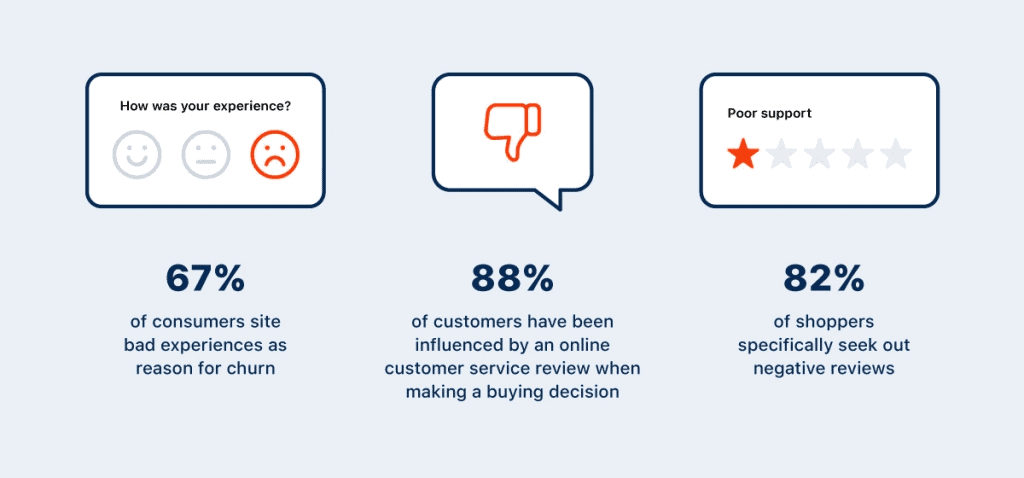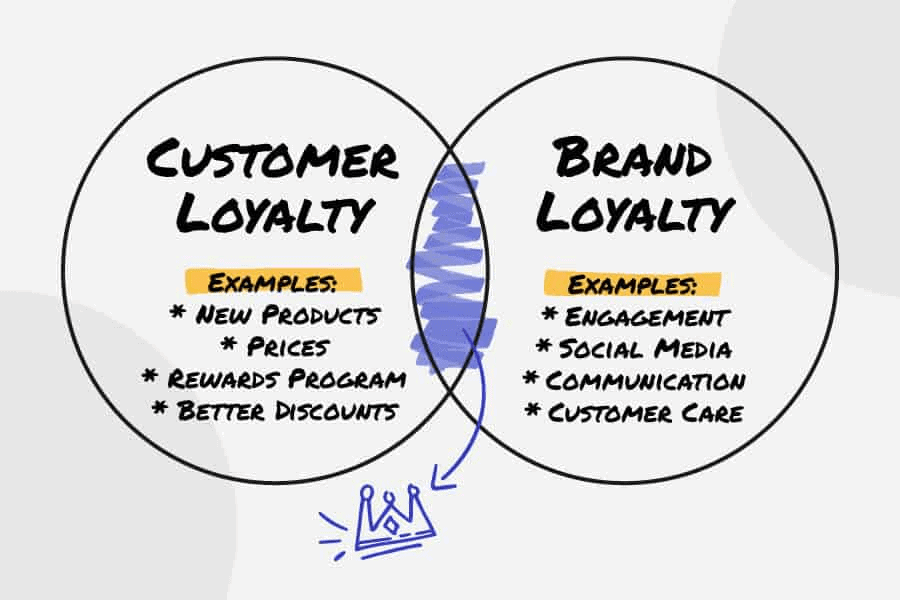Social media is an integral part of modern marketing, and it allows businesses to connect with their audience in new and innovative ways. However, as social media usage grows, it’s becoming increasingly clear that people are experiencing a certain level of fatigue with the platform. Social media fatigue refers to burnout or oversaturation that people can experience when they spend too much time on social media.
As a marketer, it’s important to be aware of the signs of social media fatigue in your audience, as it can impact the effectiveness of your campaigns. This article will explore 7 signs of social media fatigue in your audience and provide examples of how they can manifest in your marketing efforts. By understanding these signs, you can better adapt your strategies and continue to connect with your audience in meaningful ways, despite their fatigue.
Decreased engagement
One of the most obvious signs of social media fatigue in your audience is a decline in engagement. For example, if your posts are receiving fewer likes, comments, and shares than they used to, this could be a sign that your audience is becoming fatigued with your content.
To address this issue, it’s important to regularly review your social media metrics, such as likes, comments, and shares, and compare them to previous periods. If you notice a decline in engagement, it’s time to re-evaluate your content strategy. You may need to experiment with different formats, topics, or targeting to better appeal to your audience and increase engagement. Additionally, you can understand the reasons behind the decline in engagement by conducting surveys, polls, or focus groups with your audience.
Lower click-through rates
Lower click-through rates are another sign of social media fatigue in your audience. Click-through rate (CTR) refers to the percentage of people who click on a link or ad in relation to the number of people who view it. For example, if 100 people view your ad and 20 click on the link, your CTR would be 20%.
If you are noticing a decrease in CTR on your social media ads or links, this could be a sign that your audience is becoming fatigued with your content. This could be due to several reasons. For example, your audience may become desensitized and less likely to click on your ads. They may have also seen your ads too frequently, which can lead to ad blindness. Additionally, your calls to action may not be clear, interesting, or compelling enough, resulting in a low CTR.
To address this issue, it’s important to regularly review your social media metrics and compare them to previous periods. If you notice a decline in CTR, you can try experimenting with different ad formats, such as video or carousel ads, to make your ads more engaging. You can also work on making your calls to action clearer and more compelling. You can also target your ads more effectively to reach the right audience. This way, you can increase the chances of them clicking through.
Another strategy is to diversify your marketing channels so that you are not overly reliant on social media. This could include email marketing, content marketing, or offline marketing tactics like events or print advertising. You can use a behavioral messaging platform and reach your audience in multiple ways, which can help to mitigate the effects of social media fatigue.
Reduced reach
A decline in reach can also be an indication of social media fatigue. For example, if you notice that fewer people are seeing your content, this could be due to a decline in engagement or a decrease in the number of followers. If you notice a decline in reach, you can try experimenting with different content formats or topics to appeal to your audience better.
Additionally, you can understand why your audience is unfollowing you and address those issues. Another strategy is to increase your followers through paid advertising or influencer marketing. This can help to boost your reach and mitigate the effects of social media fatigue.
You can also increase the chances of your posts being seen by optimizing your posts for the social media platform algorithm. This includes using relevant hashtags, eye-catching visuals, posting at optimal times, and live streaming, among others. A marketing gamification platform can help you create games and incentives to encourage participation.
More negative feedback
More negative feedback is another sign of social media fatigue in your audience. It can manifest in various ways, such as an increase in negative comments or complaints on your posts. For example, if you are used to receiving positive feedback on your posts but notice an increase in negative comments or complaints, this could be a sign that your audience is becoming fatigued with your content.

Source: Canny
One possible reason for this increase in negative feedback is that your audience may feel overwhelmed by the amount of social media content they see. Consequently, they are more likely to leave negative comments or complaints on your posts as they are trying to limit their overall social media consumption.
Another reason for the increase in negative feedback could be that your content no longer resonates with your audience. If your audience is changing or their interests are shifting, your content may no longer be relevant to them. This can cause them to lose interest in your posts and become more likely to leave negative feedback.
It’s important to address negative feedback promptly, whether by responding to comments or complaints or by taking action to resolve the problem. This shows your audience that you take their feedback seriously and are committed to providing a positive experience.
Decreased brand loyalty
Social media fatigue can also lead to a decline in brand loyalty among your audience. Brand loyalty refers to the level of commitment, and trust consumers have toward a brand. For example, if consumers are loyal to a brand, they are more likely to purchase products or services from that brand and recommend them to others. If you notice that people are less likely to purchase your products or services or recommend them to others, this could signify social media fatigue.

Source: Tailor Brands
One strategy to combat this is to build a strong brand identity and reputation. You can do this by consistently delivering high-quality products or services, providing excellent customer service, and building a strong online presence through social media, website, and other digital platforms. Additionally, you can create a sense of community among your audience, as this can lead to increased brand loyalty.
- More selective content consumption
As people become fatigued with social media, they may become more selective about the content they consume. More selective content consumption indicates that your audience is becoming more discerning and less willing to tolerate irrelevant or uninteresting content.
For example, if you notice that your audience is unfollowing or muting accounts that consistently post irrelevant or uninteresting content, this could signify that they are becoming exhausted with social media. They may be taking steps to curate their feeds and only engage with content that is truly meaningful and relevant to them.
This trend towards more selective content consumption can be attributed to overwhelming content on social media platforms. As a result, people are becoming more discerning in what they choose to engage with and are taking steps to curate their feeds only to include content that is truly meaningful and relevant to them.
One strategy is to provide valuable and relevant content to your audience. This can be done by understanding their needs and interests and tailoring your content to meet them. Additionally, you can create a sense of community among your audience, leading to increased engagement and a stronger connection with your brand.
Reduced conversion rates
As social media fatigue sets in, it can lead to a decrease in conversion rates. For example, if you are noticing a lower percentage of people who are clicking on your links and completing actions such as making a purchase, signing up for a newsletter, or filling out a form, this could be a sign that your audience is becoming fatigued with your content and is less likely to follow through on calls to action.
This can be a significant concern for businesses that rely on social media to drive conversions and sales. To address this issue, it’s important to regularly review your conversion metrics and compare them to previous periods. If you notice a decline, you can try experimenting with different content formats or topics to better appeal to your audience and optimize your calls to action. Additionally, it’s important to ensure that the user experience on your website or landing page is seamless and easy to navigate, which can increase the chances of conversions.
Confusing brand message
Another sign of social media fatigue among your audience is if they find your brand message confusing. As social media fatigue sets in, people may become less willing to engage with content that is not clear or does not align with their interests. If your brand message is confusing, it can lead to decreased engagement and interest in your content. This can be a significant concern for businesses that rely on social media to communicate their brand message and values. One strategy is to be consistent in your messaging and ensure that all your brand’s communication aligns with your brand’s identity and values.

Source: Incubix
Reduced referral traffic
As social media fatigue sets in, it can decrease referral traffic to your website. For example, if you notice a lower percentage of people coming to your website from social media, this could be a sign that your audience is becoming fatigued with your content and is less likely to click on links to your website. This can be a significant concern for businesses that rely on social media to drive website traffic and conversions. One strategy is to optimize your website for social media sharing to make it easy for your audience to share your content and drive referral traffic to your website.
Decrease in user-generated content
As social media fatigue sets in, it can decrease your audience’s user-generated content (UGC). For example, if you notice that people are less likely to share their own experiences or opinions about your brand, this could signify that your audience is becoming tired of your content and is less likely to engage with your brand. This can be a significant concern for businesses that rely on UGC to increase brand awareness, engagement, and trust. To address this issue, one strategy is to encourage UGC by creating challenges, giveaways, or other incentives for your audience to share their experiences with your brand.
Final Thoughts on the Signs of Social Media Fatigue
Marketers need to keep track of these changes in audience behavior, be flexible, and adjust their strategies accordingly. For example, if you notice that your audience is becoming fatigued with social media, you may want to focus on creating content that promotes self-care and mindfulness or consider reducing the frequency of your posts. You can also experiment with different formats, such as video or live streaming, to keep your content fresh and engaging.
Another strategy is to diversify your marketing channels so that you are not overly reliant on social media. This could include email marketing, content marketing, or offline marketing tactics like events or print advertising.
You can also engage with your audience, ask for feedback, understand their pain points, and tailor your content to their interests. This way, you can ensure that your audience is still interested and engaged with your content.
Lastly, it’s important to remember that social media fatigue is a natural part of the cycle and is not necessarily bad. By recognizing and addressing the signs of social media fatigue in your audience, you can adapt your strategies and continue to connect with them in meaningful ways.


